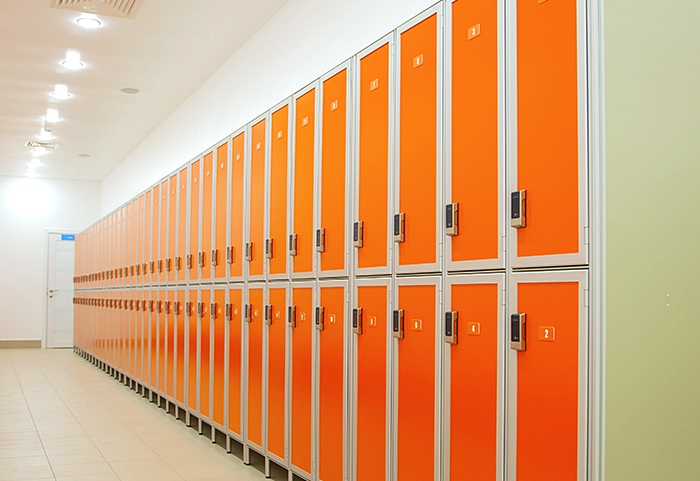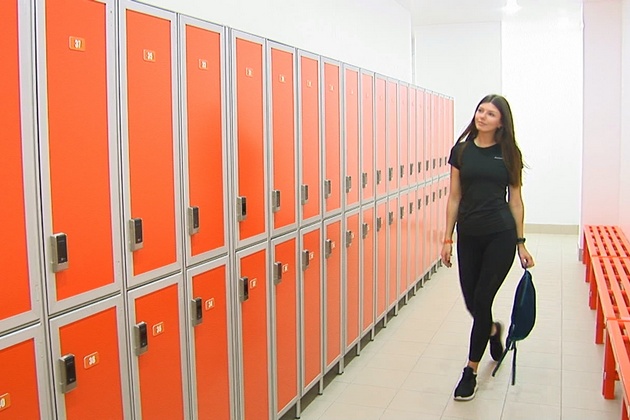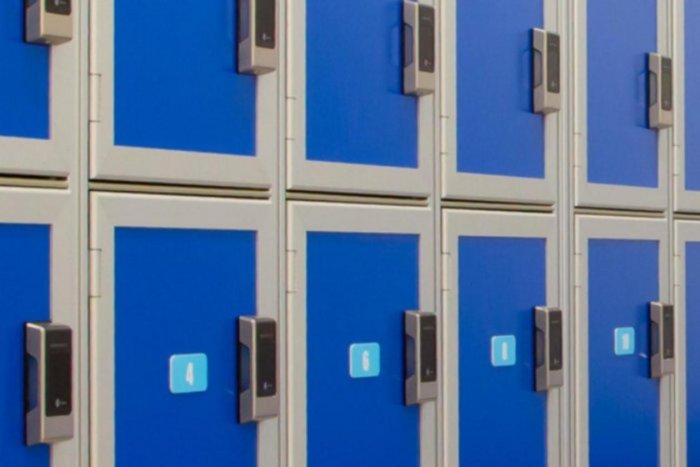Lockers that are used in swimming pools can be divided into groups according to the materials they are made of:
LCB (laminated chipboard) furniture
LCB (laminated chipboard) is the oldest way of production. A sheet of LCB is a composite material made of compressed sawdust and shavings which are formaldehyde resin-impregnated.Like any other wooden item, such lockers have short lives for obvious reasons, such as mechanical damage, low tolerance to hostile environment which include cleaning detergents and, most importantly, water. With constant contact with water even with small amount (e.g. drops from clothes, splashes, etc), LCB lockers become in poor state in a very short period of time. Firstly, the decorative layer starts coming off, then the material can absorb liquid up to 1/3 of its volume.
If air humidity is high in the building, lifetime of LCB lockers does not exceed 2 years. Although even during its first year these lockers lose their look and functionality. The bottom part starts rotting under the influence of detergents, but before that deformation of the doors can cause malfunction of the locks.
Metal lockers
The second popular lockers are the ones made of metalThey are not impregnated with any resins or other toxic substances (like LCB), and that is the first and the last advantage of these lockers. To reduce the price of the unit, the walls of such lockers are usually thin and can be very easily deformed (as a result, the locks stop working properly)
Metal lockers mainly have rigid construction that cannot be disassembled, which leads to higher transportation costs as despite their little weight, they occupy a great deal of space.
They are preferred because of their small price
The main disadvantage of this technology is that metal goes rusty in wet environment. Lifetime in such conditions is very short, only a couple of years.
HPL furniture
HPL plastic is another material to make different constructions and finishing of the surface. It is also called paper-layered plastic, because it consists of paper layers impregnated with phenol heat-resistant resins and pressed at a pressure.Its main advantage is its longevity. It is unaffected by water, detergents, it is difficult to destroy. Specialists claim that HPL plastic can serve for more than 30 years. There is a drawback, though. It is so heavy that fittings don’t cope with the weight and gradually, the unit deforms.
It is expensive to transport such lockers and they can be assembled only by a specialist.
High complexity and cost of producing HPL plastic make the lockers extremely expensive.
ACP lockers
Lockers made of aluminum composite panels combine all the listed above advantages:- Such lockers do not swell or rust because of water.
- Aluminum composite is a robust material which is difficult to deform.
- Despite its robustness, this material is not heavy which makes transportation easy.
- Parts manufactured on highly-accurate computer numeric control (CNC) machine are easily assembled (it takes 10-20 minutes to assemble one unit).
More about ACP lockers











